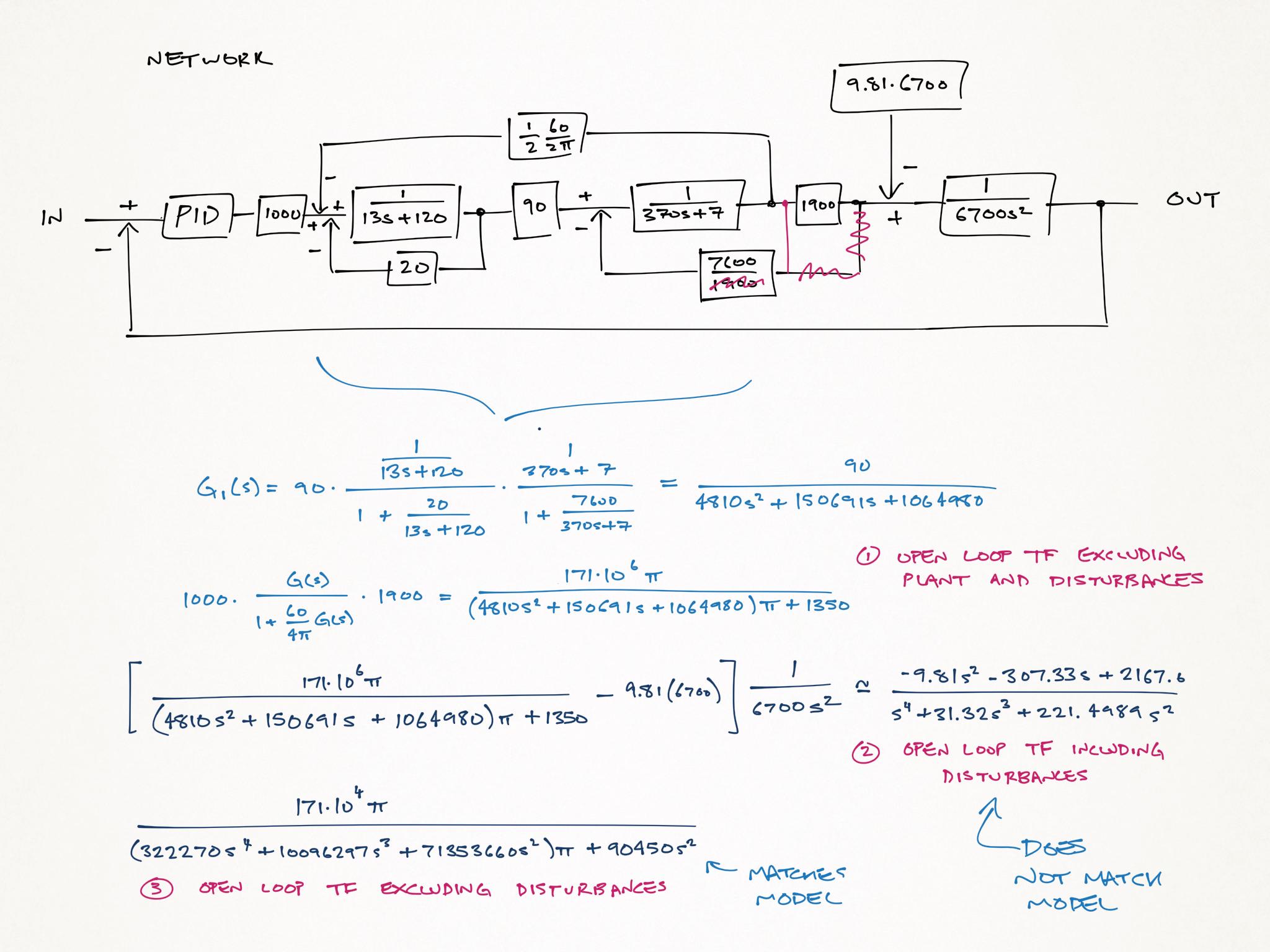I'm trying to determine the open-loop transfer function of the system below (in order to determine PID gains).

If I account for the disturbance \$(9.81*6700)\$ in the system and use equation 2, I get very different results when I compare a simulation of the simplified function to a simulation of the full network.
If I disregard the disturbances as zero and use equation 3, and I also disconnect the disturbances in the simulation, the results match.
How should I account for the disturbances when determining the transfer function? And why is the method I'm using incorrect?
Thanks in advance.
